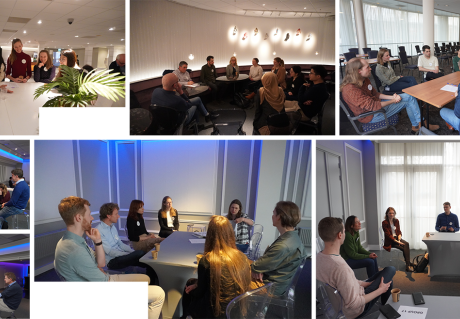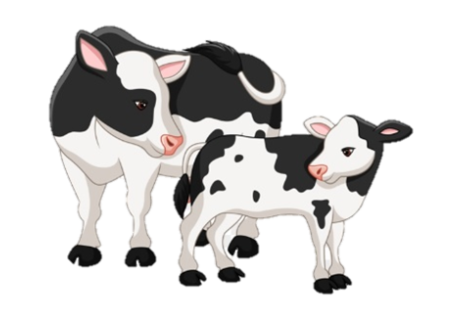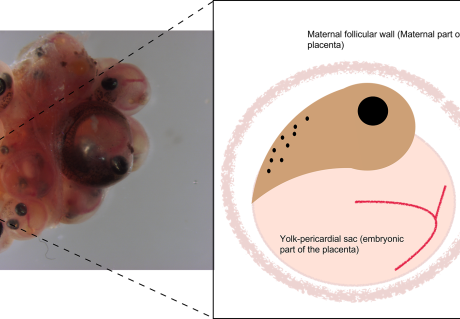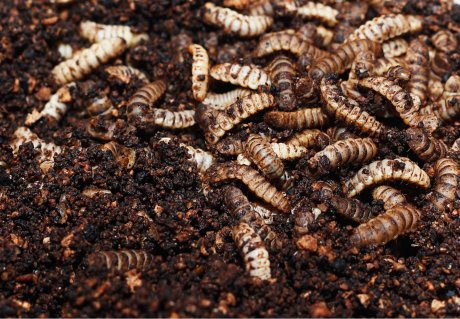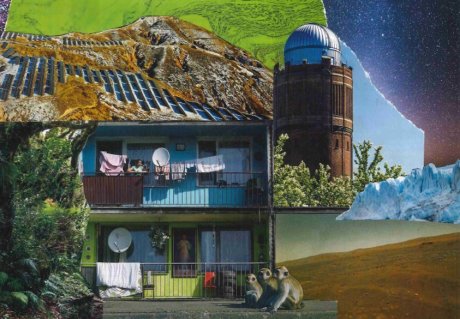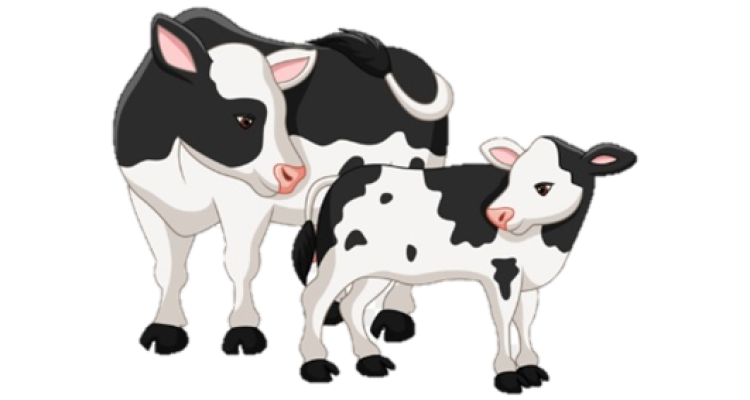
Extending lactation length of dairy cows: effects of mother on baby
WIAS Magazine - Winter edition 2022
Research Overview
The ‘big’ question
Traditionally, a one year calving interval is advised to farmers from an economical point of view, to realize a yearly peak in milk yield. A 1-yr calving interval, however, implies a yearly event of drying-off, calving and start of lactation, which are all associated with an increased risk for diseases and disorders (reviewed by van Knegsel et al., 2022). So by deliberately extended lactation length, farmers aim for improved cow health and fertility at their farm (Knight , 2008). Lactation length can be extended by extension of the so-called voluntary waiting period (VWP) between calving and start of the breeding period. Previous’ work already elucidated effects of extending VWP on dams , and reported a lower milk yield and altered metabolic status during the breeding period. It is not clear how this altered maternal environment around conception affects fetal and offspring development (Figure 1). In Wang’s PhD project, she will evaluate the effects of extending VWP of dairy cows from 50 to 125 or 200 days on their calves growth, immunity and milk performance in early and later life.
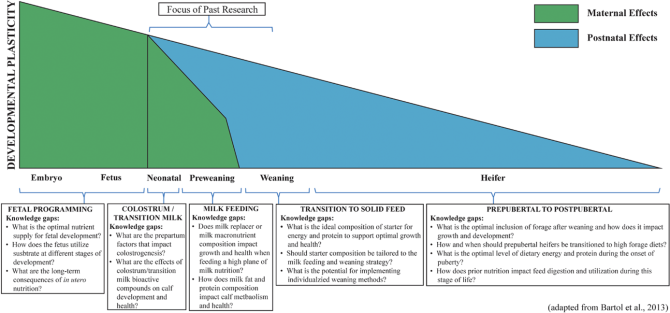
Figure 1. Several key windows of developmental programming (embryo, fetus, neonatal, preweaning, weaning, pre- and postpubertal) exist throughout the first years of a heifer’s life (van Niekerk et al., 2021).
Get to know How VWP of dams influence their offspring
Extending VWP had an effect on milk yield, body condition, metabolites and fertility of dams with different VWP (Burgers et al., 2021; Ma et al., 2022a; Ma et al., 2022b; Burgers, 2022), which experimental design is shown in Figure 2.

Figure 2. Experimental design of cows assigned to different voluntary waiting periods.
In the current project, female calves born after the different VWP of 50, 125 or 200 days were monitored (Figure 2). At birth, the calves receive their mother's group classification (Burgers et al., 2021) and receive an extra ear flap. Female calves’ growth, health and metabolic status were measured in this experiment from birth to calving till 100 days in milk (DIM) (Figure 3):
1. Birth till 12 weeks. Birth weight, colostrum volume and colostrum quality (IgG, IgM) of dams were registered. Female calves were monitored for body weight and growth biweekly. Blood samples were taken biweekly and will be analysed for a detailed metabolic profile, using a metabolomics approach.
2. After 12 weeks till calving. Female calves were monitored for body weight and growth every two months. Blood samples were taken every four months and will be analysed for a detailed metabolic profile, using a metabolomics approach. Estrous was registered and insemination was according to a standard protocol.
3. Calving till 100 DIM. Female calves were automatically monitored for body weight and body weight loss daily until 100 DIM into their first lactation. Blood samples were taken weekly for first eight weeks after calving and biweekly at 10, 12, 14 weeks and analysed for plasma glucose, NEFA, BHB, insulin, IGF-1 and growth hormone. Besides, after calving colostrum and milk samples were collected automatically for determination of composition.
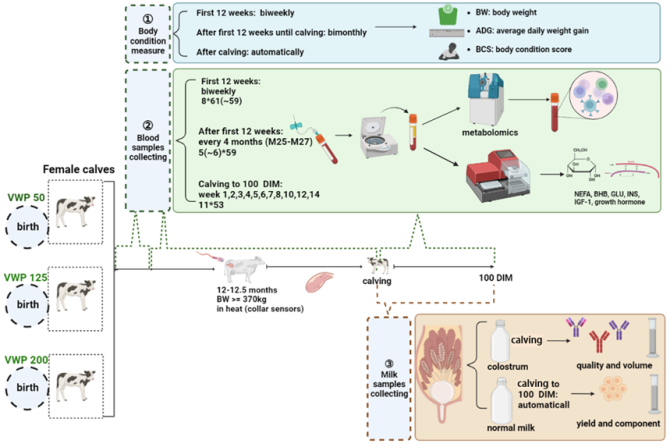
Figure 3. Experimental design of calves born to cows after different voluntary waiting periods.
Connections to other WIAS scientists
There are so many fields referred in this topic, which are the link of this project to other WIAS PhD projects. Concerns in society regarding dairy farming are welfare, health of cows and calves and longevity of dairy cows (Boogaard et al. 2011), as well as the actual growing debate on the environmental impact of dairy farming. Improved health and longevity in dairy cows will not only be related to improved cow welfare, but also to a reduction in medicine and antibiotic usage. Besides, concern about the dairy industry are the calves that do not stay at the dairy farm but are reared in the veal industry. The current study will use knowledge generated in earlier WIAS PhD projects concerning consequences of extended VWP for cows (Burgers, 2022; Ma, 2022), as well as health and management of calves (Marcato, 2021).
Evaluating the consequences of periconception health and metabolic status in dairy cows and rearing conditions in early life on health, development and lactational performance of her offspring will contribute to optimizing cow and calf management aiming at healthy animals and sustainable dairy farming. To be specific, it includes aspects relevant for epigenetics, veterinary, welfare, nutrient efficiency and environmental management of dairy farm.

(photo by Yapin Wang at Dairy Campus in Leeuwarden)
References:
Boogaard, B.K., Oosting, S.J., Bock, B.B., Wiskerke, J.S.C. 2011. The sociocultural sustainability of livestock farming: an inquiry into social perceptions of dairy farming. Animal 5(9): 1458-1466.
Burgers, E. 2022. Challenging the paradigm of one calf per year : Consequences of extended lactations for individual dairy cows. PhD thesis Wageningen University, the Netherlands
Burgers, E. E. A., A. Kok, R. M. A. Goselink, H. Hogeveen, B. Kemp, and A. T. M. van Knegsel. 2021. Effects of extended voluntary waiting period from calving until first insemination on body condition, milk yield, and lactation persistency. Journal of Dairy Science 104(7):8009-8022.
Knight, C. H. 2005. Extended lactation: turning theory into reality. Advances in Dairy Technology 17:113-123.
Ma, J. 2022. Lactation length management: consequences for fertility and health in dairy cows. PhD thesis Wageningen University, the Netherlands
Ma, J., E. E. A. Burgers, A. Kok, R. M. A. Goselink, T. J. G. M. Lam, B. Kemp, and A. T. M. van Knegsel. 2022a. Consequences of extending the voluntary waiting period for insemination on reproductive performance in dairy cows. Animal Reproduction Science 244:107046.
Ma, J., A. Kok, R. M. A. Goselink, T. J. G. M. Lam, B. Kemp, and A. T. M. van Knegsel. 2022b. Udder health of dairy cows with an extended voluntary waiting period from calving until the first insemination. Journal of Dairy Research 89(3):271-278.
Marcato, F. 2021. A journey to improve robustness of veal calves. PhD thesis Wageningen University, the Netherlands
van Knegsel, A. T. M., E. E. A. Burgers, J. Ma, R. M. A. Goselink, and A. Kok. 2022. Extending lactation length: consequences for cow, calf, and farmer. Journal of Animal Science 100(10).
van Niekerk, J. K., Fischer-Tlustos, A. J., Wilms, J. N., Hare, K. S., Welboren, A. C., Lopez, A. J., Yohe, T. T., Cangiano, L. R., Leal, L. N., & Steele, M. A. 2021. ADSA Foundation Scholar Award: New frontiers in calf and heifer nutrition-From conception to puberty. Journal of dairy science, 104(8), 8341–8362.
